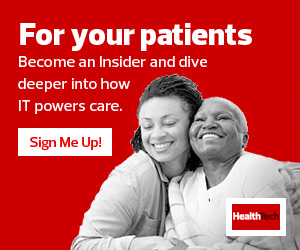Not only do these technologies eliminate the risks of in-person contact, they can drive efficiencies for busy healthcare staff. Even better, this data collection empowers patients — and the real-time readings, if shared with family members, could allow interventions in real time.
Fifty-one percent of surveyed home healthcare providers who use technology already offer remote patient monitoring in some form, according to a white paper released this year by AlayaCare and Home Health Care News. And nearly three-quarters of respondents said the pandemic is prompting a re-evaluation of their technology needs.
That shift could open the door to many more opportunities in the home setting. Think “smart pills” with digital sensors to record adherence or diapers with radio-frequency identification tags to alert caretakers, among other helpful ideas.
I’m also encouraged by efforts at Pennsylvania’s Geisinger Health, which is deploying VR headsets for home-based patients to improve pain management. California provider Libertana Home Health has created an Alexa skill to help elderly users connect with caregivers, set medication and appointment reminders, and input health data.
Each component, properly planned and implemented, has an important role to play.
RELATED: Videoconferencing Has Become a Lifeline for Seniors
Boost Training and Infrastructure for Home Healthcare Programs
Despite a growing interest in technology and its proven value to support care in a home-based setting, obstacles remain: 1 in 4 older adults doesn’t use the internet, the Pew Research Center notes, and others face issues of connectivity.
And nearly one-third of home healthcare providers don’t incorporate technology into their services, the AlayaCare/Home Health Care News survey data shows. Top hurdles to doing so, respondents said, include costs and a lack of reimbursement. Technology vendors must work with care providers to navigate this complex issue.
Positive news came this month when the U.S. Centers for Medicare & Medicaid Services announced amended terms for accelerated and advanced payments granted to Medicare-certified healthcare providers — including home health agencies — but more work remains to fund new and wider uses for technology, including broadband.
After all, connectivity is required to make these tools work. Public-private initiatives, such a new pilot program in California, are working to bring high-speed internet service to low-income seniors. Still, the service must be affordable and accessible for all.
Finally, education must lie at the heart of all projects. Teaching older users to accept and master the tools — and training employees and loved ones to work with them — will determine the success and direction of these critical applications.
This article is part of HealthTech’s MonITor blog series. Please join the discussion on Twitter by using #WellnessIT.












